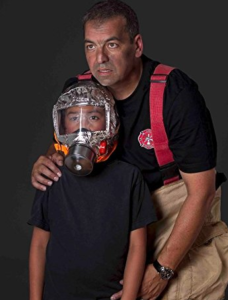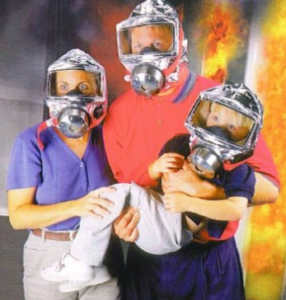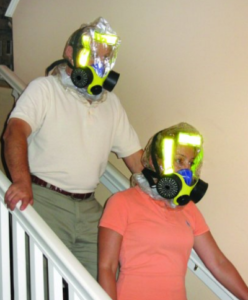Holiday Security Mistakes
 All ready for the holidays?
All ready for the holidays?
Here are 3 security mistakes people tend to make at this time of year. Take 2 minutes to check them out. It would be wonderful if you and your family could avoid them all.
-
Packages are SOOOO tempting!
Sure, you know better than to allow packages to be delivered to an empty house.
Just a week ago I was stopped on the street by a patrolman who showed me a picture of a kid taking a package from a front porch. (The picture had been taken by a home security camera. More on those later.)
And when you’re shopping, take the time to put gift purchases into the trunk of your car. If they won’t FIT in the trunk, at least cover the back seat pile with a dark and preferably dingy looking blanket. Better yet, make an extra trip rather than let packages sit unattended in a parking lot in full view.
And at home, don’t position your tree and all the lovely presents right in front of a window as in the picture above. Someone could break the window, grab the presents and run.
Packages are so tempting — to thieves!
-
“We’re so proud of our emergency preparations.”
The holiday season often means more visitors to your house. The guy to string the lights on the roof. UPS and Amazon delivery people. All the invitees to your Christmas party!
Every person who comes onto your premises has the chance to take a good look at what you have – and that includes some of your emergency preparedness items.
Your gardener sees the locks, the security cameras and lights you’ve installed. The delivery guy walking past your open garage door sees your tools and the cupboards and shelves packed with food and water. The computer guy you bring in to troubleshoot your new network sees your ham radio set-up, not to mention your laptop and printers.
It’s natural for a visitor to tuck this sort of information away. And in a big emergency, your house might become a target for one of those visitors, now turned desperate.
What can you do to cover or camouflage emergency supplies? Yes, be proud of the sensible steps you’ve taken. But with a bit of creativity you’ll get more of them out of sight. You can be just as satisfied and maybe a whole lot safer.
-
Take out the trash!
We’ve all read the novels where the criminal is identified because of stuff he puts in the trash. (Harrison Ford left orange peels and fake ID photos in the wastebasket in The Fugitive, remember?)
If you’re making a lot of purchases and getting a lot of gifts, you are going to have more trash than usual. And it may attract the wrong kind of attention.
Save and/or shred receipts or statements that have account numbers. Some receipts for online purchases may show up in your email. Protect them from casual view. Don’t stuff empty cardboard boxes (with pictures of TVs and electronic games and security cameras and drones!) into the trash; break them down and recycle anonymously at the recycling place.
And if you’re traveling during the holidays, make sure newspapers, leaves or other trash doesn’t build up outside while you are gone. That trash, plus a dark and empty house, is a real invitation to trouble. (Ask a neighbor for help, and invest in some timers for lights and/or radios.)
Oh, and for heaven’s sake, don’t you or your kids announce via social media or on a phone message that “We’re away skiing for a week!” Ouch!
We wish you the pleasure of giving, and the excitement of receiving. But we sure hope it’s not spoiled because you overlooked taking these sensible precautions.
Virginia
Your Emergency Plan Guide Team
P.S. We’re writing an Advisory about “Hiding valuables in plain sight.” Sign up for all our Advisories to be sure you get it.





 Plus, just two days ago we emerged from a heightened earthquake alert resulting from a swarm of 140+ small quakes near the base of the San Andreas Fault. That’s the seismic fault that’s going to give birth to the long-overdue “Big One.”
Plus, just two days ago we emerged from a heightened earthquake alert resulting from a swarm of 140+ small quakes near the base of the San Andreas Fault. That’s the seismic fault that’s going to give birth to the long-overdue “Big One.”




 And according to surveys, 90% of American pet owners consider their pet “a member of the family.”
And according to surveys, 90% of American pet owners consider their pet “a member of the family.”







 When you see the piles of ruined possessions out on the curb, as in the photo, you get a better idea of what “no insurance” really means. And, I hope, you are prompted to take another look at whether your own insurance will help cover flood damage.
When you see the piles of ruined possessions out on the curb, as in the photo, you get a better idea of what “no insurance” really means. And, I hope, you are prompted to take another look at whether your own insurance will help cover flood damage.




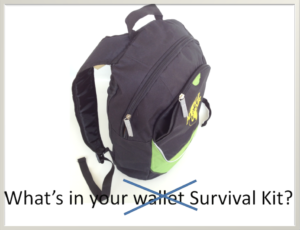 We can’t deal here with all the social issues on campus. But there are some things you can do to make your life away at school a bit safer and more secure. Take the time to check these out.
We can’t deal here with all the social issues on campus. But there are some things you can do to make your life away at school a bit safer and more secure. Take the time to check these out. The working of a typical commercial door hinge may be defeated by use of a belt. Tighten it down to prevent the door from opening, as shown by Bill Stanton, safety expert.
The working of a typical commercial door hinge may be defeated by use of a belt. Tighten it down to prevent the door from opening, as shown by Bill Stanton, safety expert.

 We have written before about the shadowy world of nuclear power plants. In last week’s news I found another of the disconcerting developments connected with plants that have been shut down and that are going through the “decommissioning process.”
We have written before about the shadowy world of nuclear power plants. In last week’s news I found another of the disconcerting developments connected with plants that have been shut down and that are going through the “decommissioning process.”




 OK, so you’re in good shape when it comes to preparedness.
OK, so you’re in good shape when it comes to preparedness. The first time the subject came up was after Katrina, when we heard the horrific stories of people left behind in their nursing home to drown. Then, after Hurricane Sandy, stories came out about people trapped in their high-rise apartments when the power – and thus the elevators – were out for days and days.
The first time the subject came up was after Katrina, when we heard the horrific stories of people left behind in their nursing home to drown. Then, after Hurricane Sandy, stories came out about people trapped in their high-rise apartments when the power – and thus the elevators – were out for days and days.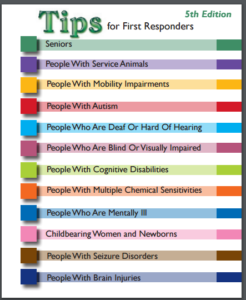 Two resources I found most useful:
Two resources I found most useful:


 Fire:
Fire: 
